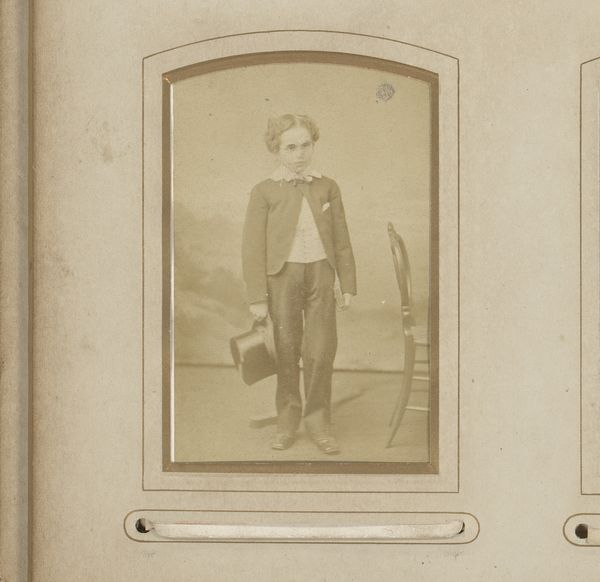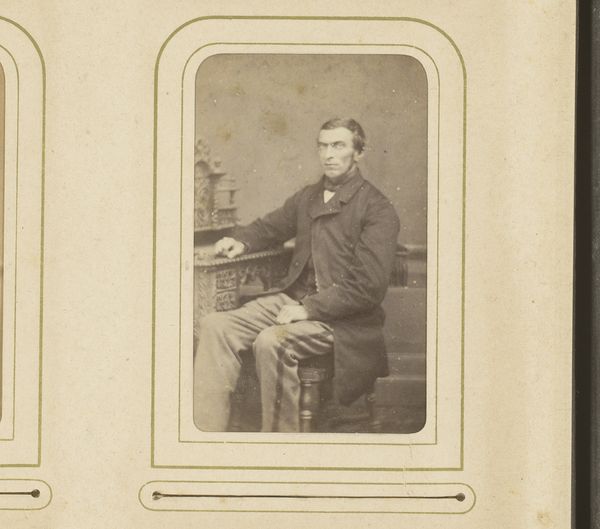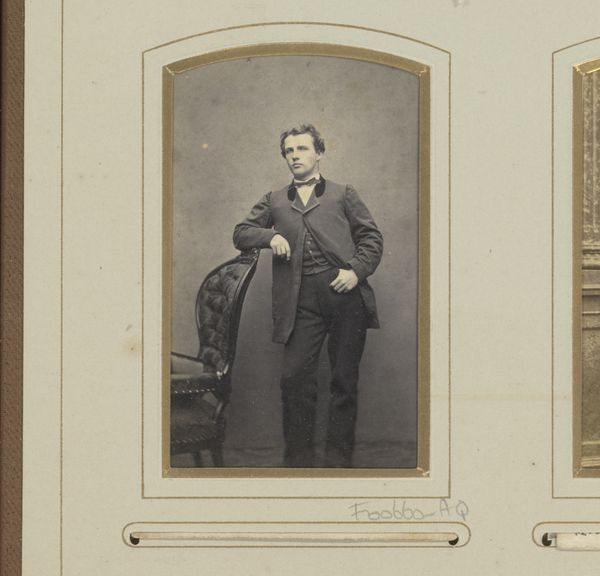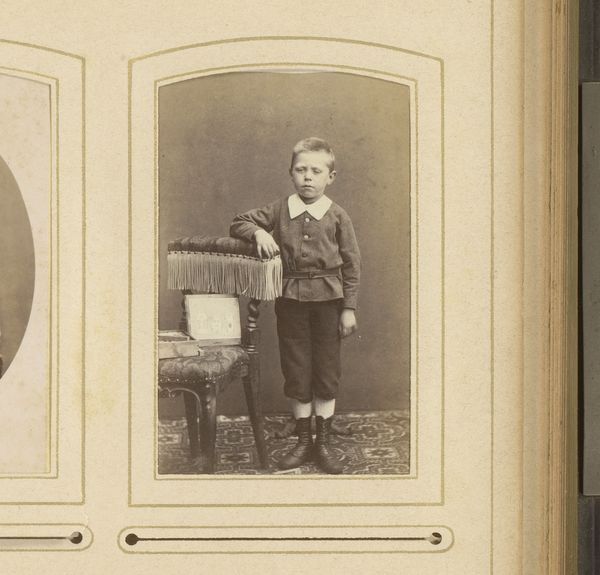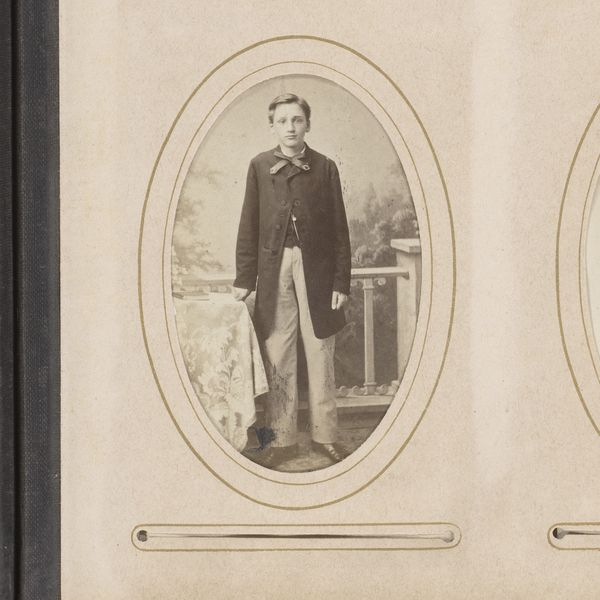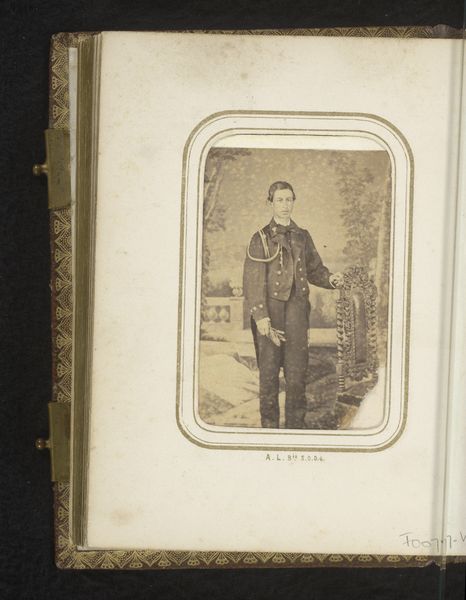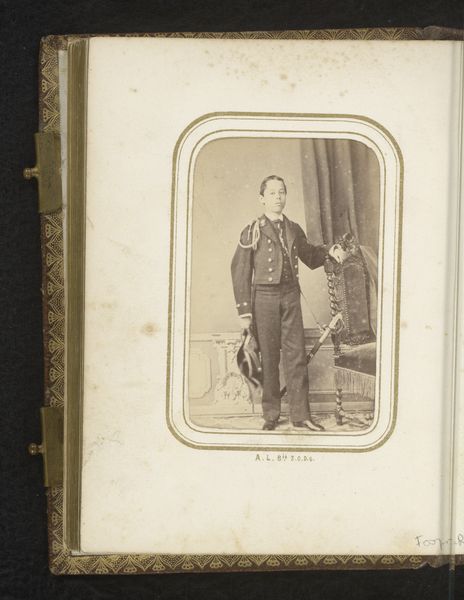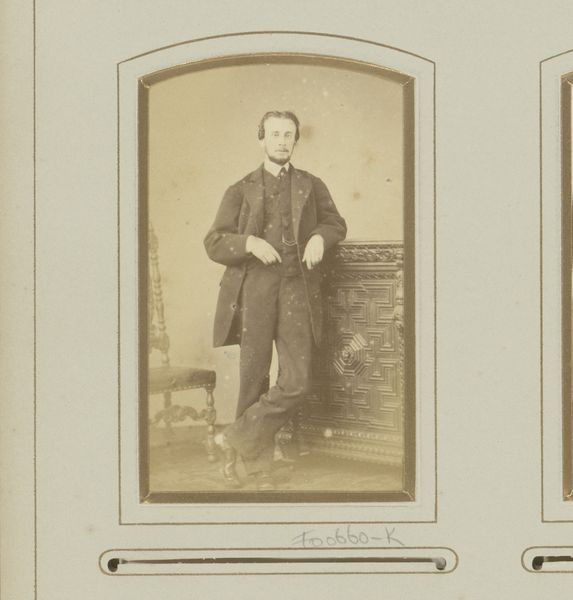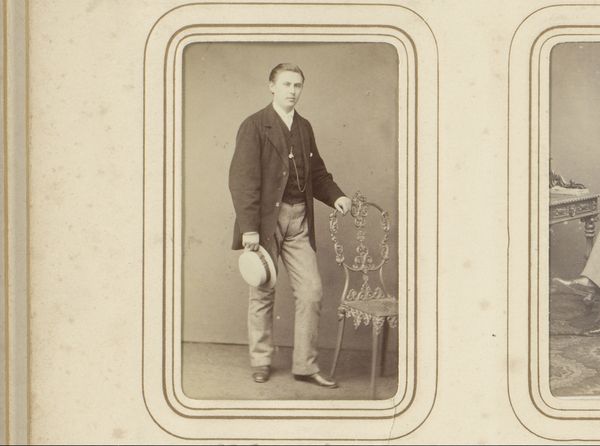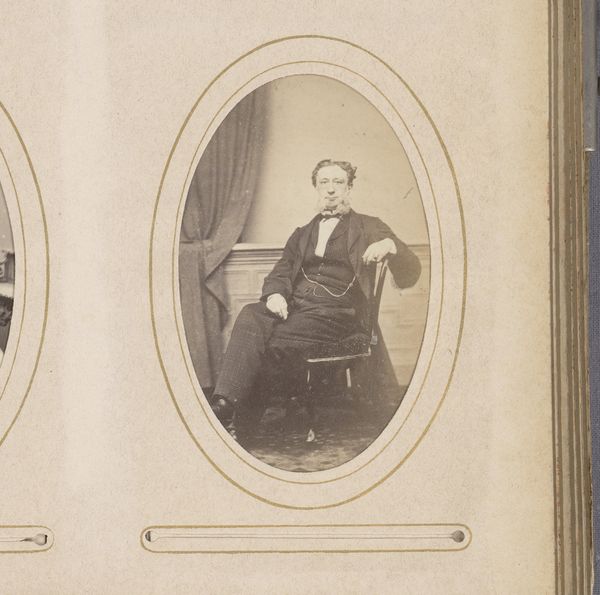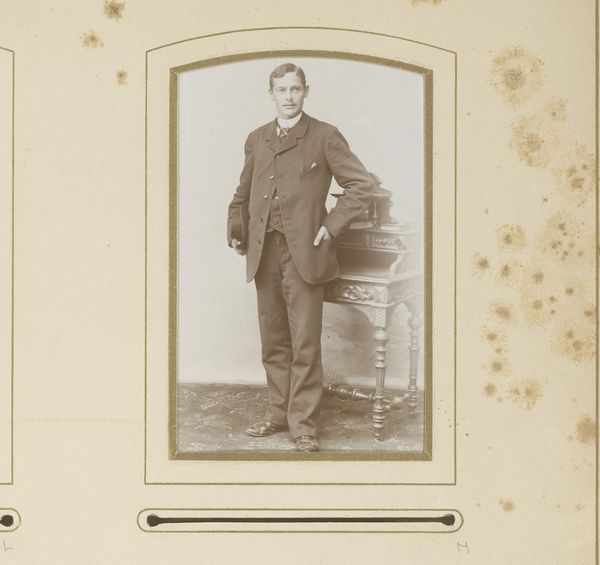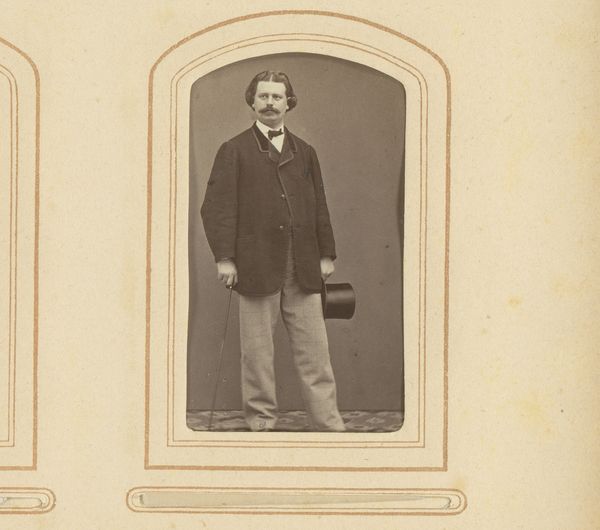
photography
#
portrait
#
photography
#
academic-art
#
realism
Dimensions: height 84 mm, width 53 mm
Copyright: Rijks Museum: Open Domain
Curator: This photograph, entitled "Portret van een jongen, staand bij een tafel," roughly translated to "Portrait of a boy standing by a table," was created by Photographie Française of Amsterdam, sometime between 1875 and 1899. It's a fantastic example of late 19th-century portraiture. Editor: My first impression is one of contained formality, a stillness and quiet dignity about the young boy. The muted tones enhance that somber atmosphere. He seems aware of the camera, aware of being documented for posterity. Curator: The studio portrait was indeed about projecting an image of respectability, especially for the emerging middle class. Examining photographic portraits from this era, we can see how new social identities were being constructed and affirmed through visual representation. Editor: And note his clothing – almost a uniform. The severe cut and dark color. We need to read that as part of the power dynamic being represented, perhaps mirroring constraints placed upon youths of the era. This also reflects on social class as it denotes the rise of department stores in providing affordable yet 'class-accurate' styles. Curator: Precisely. The clothing signifies status, the carefully arranged tableau speaks to aspiration. Also consider the floral arrangement on the table – nature carefully curated and controlled, mirroring, perhaps, expectations placed on the child himself. The politics of portraiture really do reveal a societal landscape. Editor: But there's something vulnerable in his gaze as well. Despite the formality, there’s a raw, almost questioning element that seems at odds with the rest. We must ask if it serves as a subversive push back or even highlights a common human experience as many other artists have showcased over the years. Curator: I think it reflects an inherent tension within the portrait genre itself: the struggle between self-presentation and a desire for authenticity. The photo exists as evidence and, ultimately, speaks volumes about representation, performance, and the historical construction of identity. It opens the way to discussions of modern theory and identity. Editor: Absolutely, looking through an intersectional lens truly brings so many ideas to light regarding social construct and class relations during that era. It's such an illuminating glimpse into a specific historical moment. Curator: Indeed, its historic depiction, coupled with contemporary theory and discussions regarding the modern human condition, continues to bring about vital cultural discussions.
Comments
No comments
Be the first to comment and join the conversation on the ultimate creative platform.
